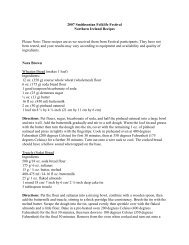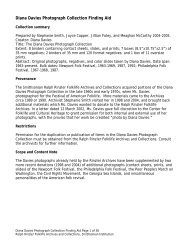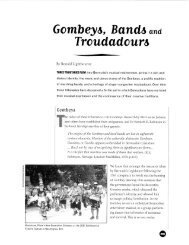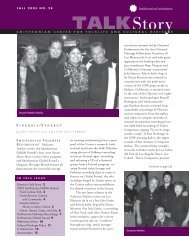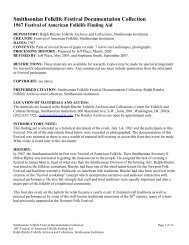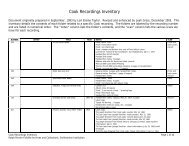Who Owns Traditional Medical Knowledge? - Smithsonian Center ...
Who Owns Traditional Medical Knowledge? - Smithsonian Center ...
Who Owns Traditional Medical Knowledge? - Smithsonian Center ...
You also want an ePaper? Increase the reach of your titles
YUMPU automatically turns print PDFs into web optimized ePapers that Google loves.
180 SITA REDDY<br />
CODA: WHO OWNS AYURVEDA<br />
In the end, what big picture can we describe that emerges from these several<br />
smaller narratives, this mosaic, of Ayurvedic heritage disputes How do we begin<br />
to sort through this diversity of cultural ownership practices to come up with<br />
overarching theories about Ayurvedic knowledge, let alone TMK, or intangible<br />
cultural heritage And who really owns TMK Is it owned by indigenous groups<br />
like the Ezhavas who have been left out of history Is it owned by elite practitioners<br />
who claim exclusive rights of use over Ayurvedic texts Is it owned by<br />
tribals, who provided the medical knowledge in the first place, or the Ayurvedic<br />
company that bought the license for those rights Or is it owned by the forest<br />
as the ultimate public domain If nothing else, these three contrasting tales of<br />
cultural ownership over the same medical tradition suggest that even the questions<br />
asked by state-based heritage protection schemes can differ widely. Thus,<br />
the Hortus Malabaricus case asks whether TMK is owned by history or if it<br />
can be rewritten—that is, whether the past itself is a scarce resource, as anthropologists<br />
have begun to formulate. 70 The TKDL case asks whether traditional<br />
knowledge (encoded in texts) should be part of the public domain or not, and<br />
whether such textual knowledge can be exclusively owned by a nation or even an<br />
elite professional group. The Kani case assumes that TMK is collectively owned<br />
but asks how these communities should be defined or compensated for their<br />
heritage.<br />
The larger problem is that if, even within a single medical tradition, heritage<br />
protection schemes do not always share similar definitions of what heritage is or<br />
who it is supposed to protect, where does one even begin to theorize ownership<br />
of TMK or intangible heritage At the risk of simplifying, perhaps one beginning<br />
lies in recognizing the dialectical relationship between culture (or heritage) and<br />
the law: that in this case, even if culture needs the law to regulate and protect it,<br />
the law in turn, however well intentioned and necessary, produces culture, produces<br />
knowledge, and thus produces further claims and counterclaims of ownership<br />
over TMK. As has already been suggested, making heritage legible is a<br />
double-edged sword: it transforms cultural objects and marginalizes cultural producers,<br />
but it also creates new types, categories, and subjectivities to be managed<br />
and controlled.<br />
This is not to say that heritage and TMK regulation is unnecessary or even Orwellian<br />
in nature. It is merely to note that there may never be universal answers to<br />
global heritage disputes. Real-life solutions to heritage crises may in fact emerge<br />
slowly, on a case-by-case basis. State practices might inspire indigenous responses<br />
and both of them might work with and against the logic of the market; but the<br />
most creative, innovative solutions often come from civil society—professionals,<br />
NGO advocacy groups, educational institutions, libraries, archives, curators—all<br />
of whom, as we know from NAGPRA legislation in the United States, are the ones<br />
building the cultural policy edifice slowly, brick by brick.



